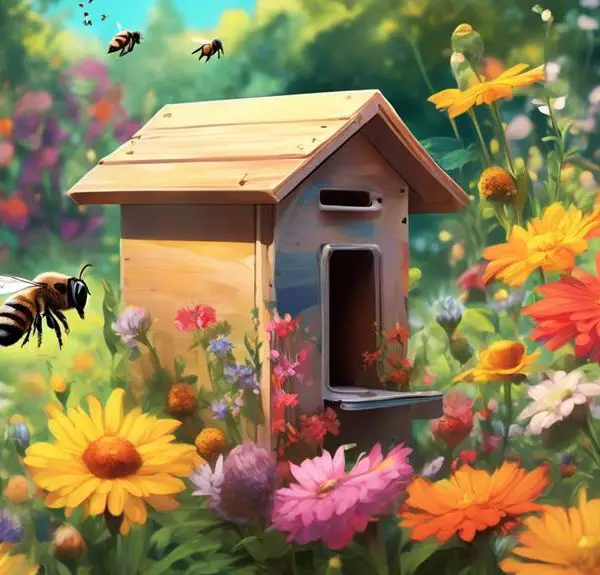Take a dive into the intriguing world of Mason bees and uncover the potential of bamboo as their ideal sustainable nesting habitat.
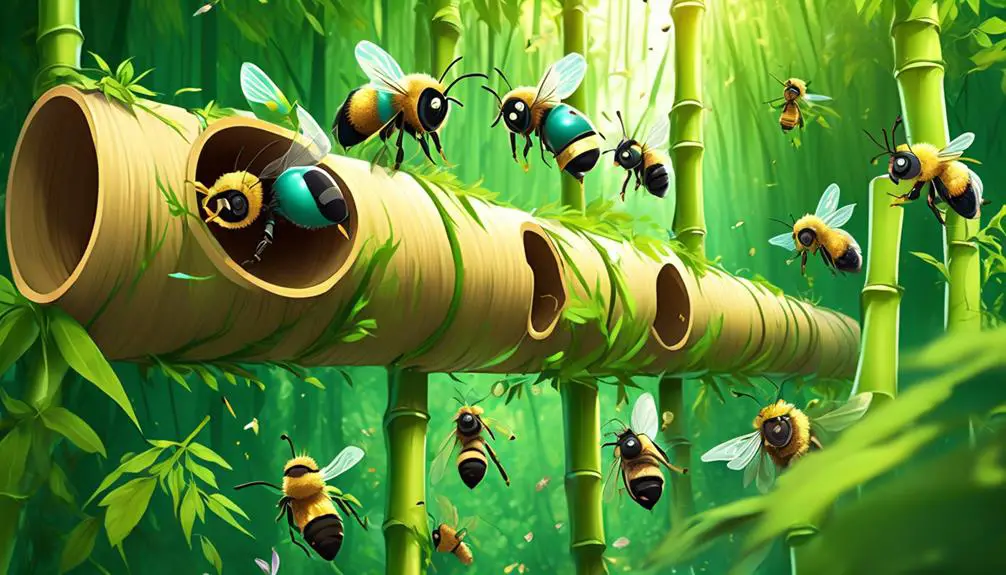
Can Mason Bees Live in Bamboo Houses?
Did you know that nearly 90% of the world's bee species are solitary, like the Mason bee? That's right, these industrious insects don't live in hives like their Honey bee counterparts. Instead, they tend to favor holes in wood or hollow stems to establish their nests.
So, you might now be wondering, could they also thrive in bamboo houses? This is a fascinating question and a topic worth exploring further, especially considering the global decline in bee populations and the vital role they play in our ecosystem.
As you continue on, you'll uncover the potential of bamboo as a nesting material for Mason bees and whether it could offer a sustainable solution for supporting these vital pollinators.
Key Takeaways
- Mason bees naturally prefer nesting in holes in wood or hollow reeds.
- Bamboo provides a suitable and sustainable material for creating bee houses that mimic the natural habitat of Mason bees.
- The diameter and depth of the bamboo tubes should be specific to accommodate the needs of Mason bees.
- Bamboo houses offer numerous benefits for Mason bees, including suitable cavities for nesting, protection from extreme weather, and cost-effectiveness.
Understanding Mason Bees' Natural Habitat
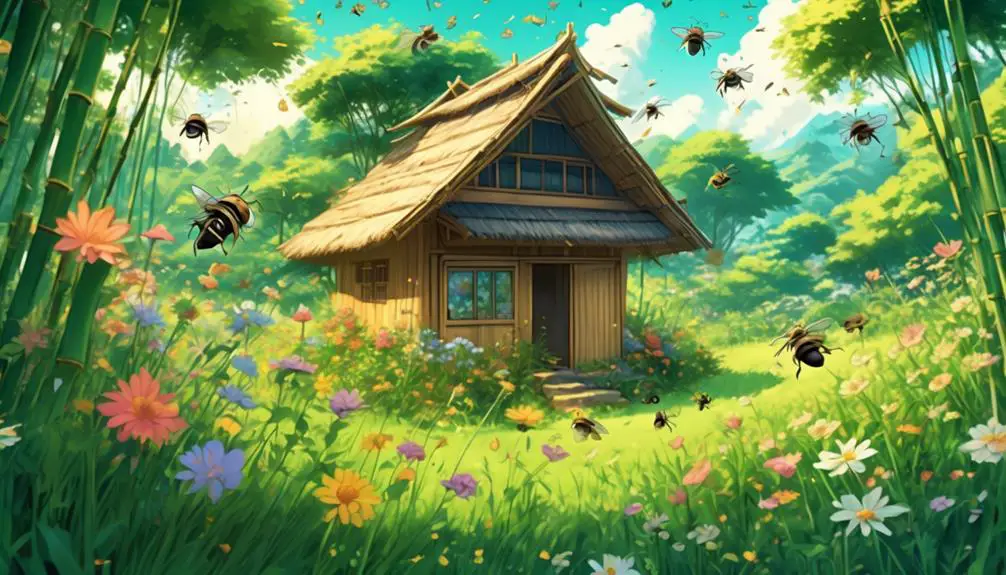
To truly comprehend the ecology of Mason bees, you must first delve into their natural habitats, primarily consisting of hollow reeds or holes in wood, created by other insects. These solitary bees don't construct hives like their honeybee counterparts; instead, they're opportunistic dwellers, occupying pre-existing cavities for nesting.
You'll often find them in damp, rotten wood or the hollow stems of dead plants. They've a knack for exploiting these spaces, creating a series of brood cells within each tunnel. Each cell is fashioned with a mixture of nectar and pollen, serving as a larder for the developing larvae.
Their preference for wood and reed habitats is crucial when considering artificial domiciles for them. Bamboo, with its hollow structure and natural segmentation, mimics this environment perfectly. But it's not just about the structure; location matters too. They favor sunny, south-facing spots with ample foraging materials nearby.
Understanding these elements is key in establishing successful nesting sites for Mason bees. Remember, it's not just about creating a home, it's about replicating a habitat. A better grasp of their habitat preferences will ensure your efforts to provide for them are more fruitful.
Bamboo as a Bee House Material
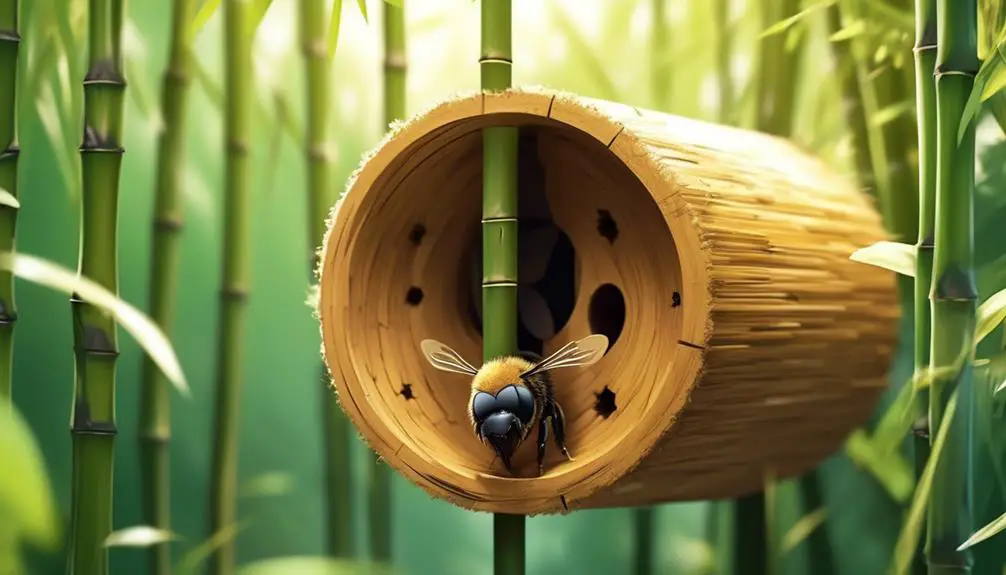
Drawing from our understanding of Mason bees' natural affinity for wood and reed habitats, let's explore why bamboo serves as an excellent material for constructing bee houses. Bamboo's structural characteristics make it an ideal choice. It's naturally hollow, providing a ready-made shelter for the bees, and it's sturdy, ensuring longevity for the bee house.
Bamboo's interior surface is rough, which allows bees to grip easily and lay their eggs. This roughness also aids in the creation of the bees' mud partitions, which they construct to separate individual cells within their nests.
Furthermore, bamboo's resistance to decay is a significant advantage. A bamboo bee house can withstand different weather conditions and last for several years without rotting, providing a long-term habitat for the bees. This makes bamboo both a practical and cost-effective option for beekeeping.
Moreover, bamboo is an eco-friendly material. It grows rapidly, making it a sustainable option that doesn't contribute to deforestation.
Adapting Mason Bees to Bamboo Houses
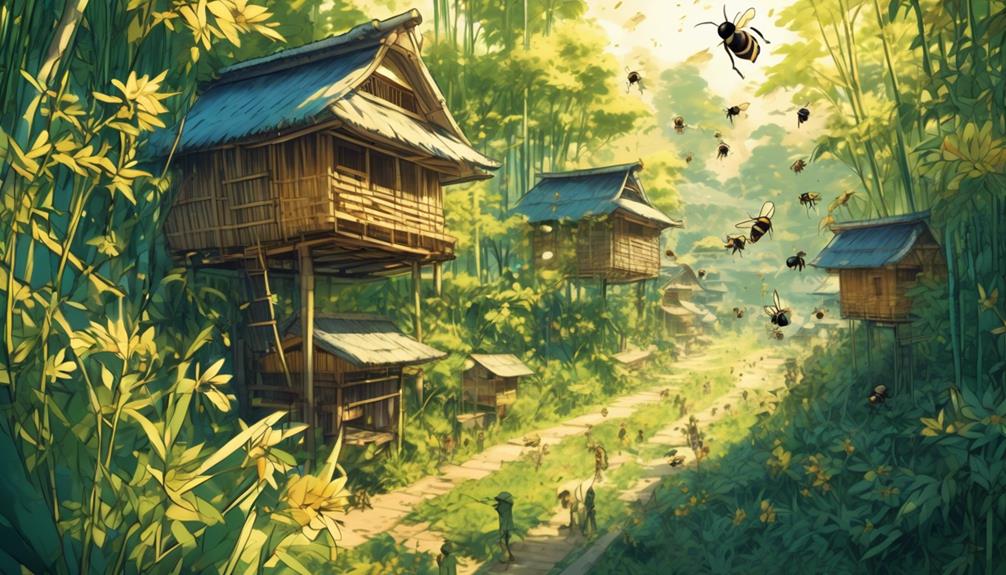
Introducing Mason bees to bamboo houses requires a keen understanding of their behavioral patterns and nesting requirements. It's not as simple as placing a bamboo hive in your garden and hoping for the best. You'll need to thoughtfully consider their habitat needs and make the necessary adjustments to ensure the bees can thrive.
The diameter of the bamboo tube is a critical factor. Mason bees prefer tubes with a diameter of 5/16 of an inch – too small and they won't enter, too big and they'll feel insecure. The tube's depth is also crucial; it should be 6 inches deep to allow for multiple cells within each tube.
Placement of the house is another key aspect. It should be positioned about 3-5 feet high, facing the morning sun to warm the bees as they wake up. It's also important to provide a mud source nearby as female Mason bees use mud to divide the cells within the tube.
Benefits of Bamboo Houses for Bees
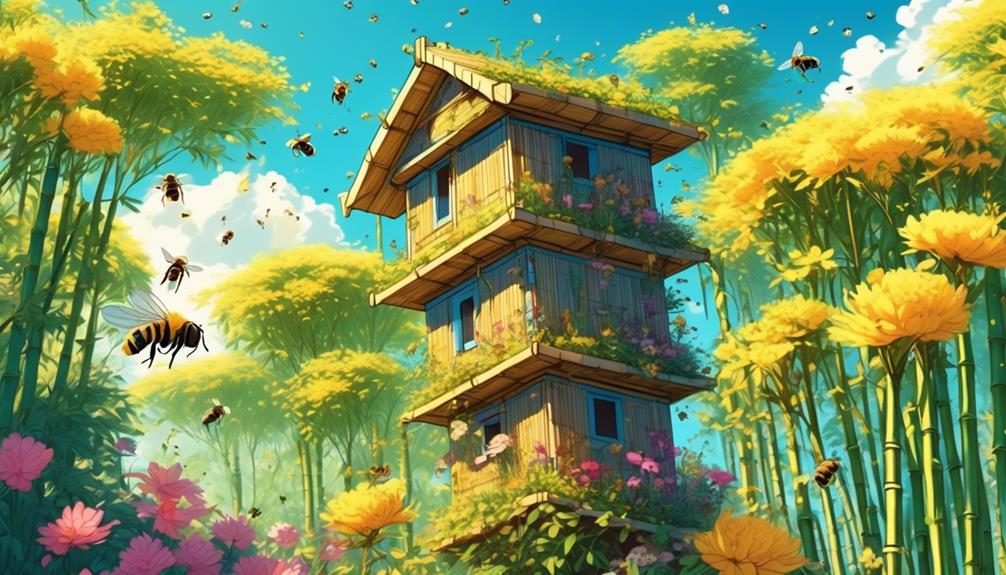
Bamboo houses offer a myriad of advantages for Mason bees, starting with their natural and sustainable characteristics. Bamboo's inherent structural design provides suitable cavities for Mason bees. Its hollow, segmented nature forms individual cells where bees lay their eggs, mirroring their natural nesting sites.
Each bamboo segment's size approximates the ideal diameter for Mason bee nests, encouraging these pollinators to take up residence. Unlike other materials, bamboo doesn't require additional treatment to resist moisture and decay, making it safe for the bees and their offspring.
Moreover, bamboo's fast growth rate ensures a sustainable supply. You're not only providing bees with a home but contributing to a more sustainable future.
Bamboo's thermal properties also play a crucial role. They maintain an optimal temperature, protecting the bees from extreme weather fluctuations. Plus, its porous material allows for sufficient air circulation, essential for the bees' health.
Lastly, bamboo houses are cost-effective, easy to maintain, and long-lasting. They're a practical solution in urban areas where natural nesting sites are scarce.
Potential Drawbacks and Solutions
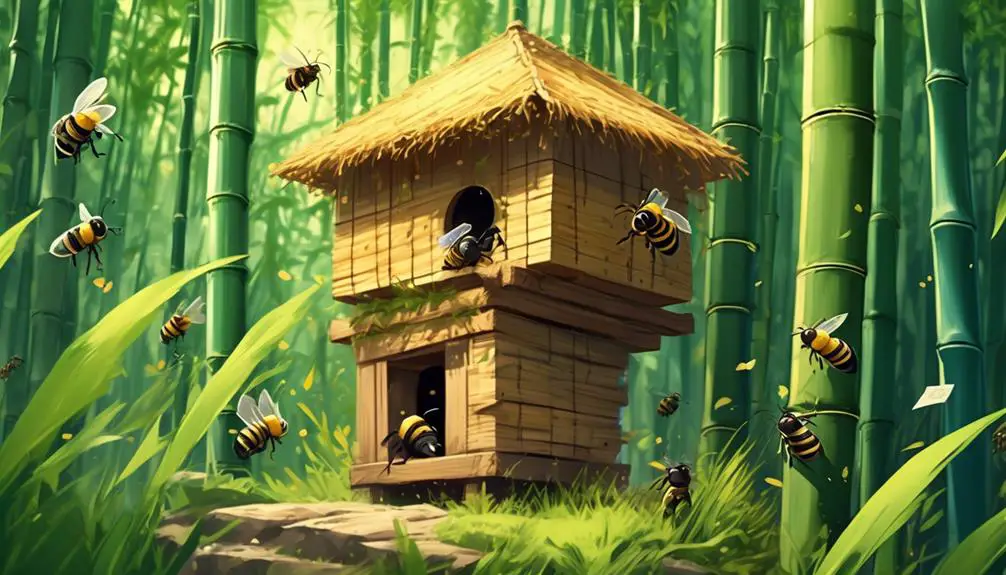
Despite their numerous benefits, bamboo houses for Mason bees aren't without potential drawbacks, but with careful consideration, you can easily address these issues.
One primary concern is the potential for moisture buildup within the bamboo tubes. This can lead to mold growth, which is detrimental to the bees' health. To mitigate this, ensure your bamboo house has a slight downward tilt to allow water to drain out.
Another issue is the absence of natural predators in man-made houses, which could lead to an overpopulation of bees. Regularly monitor the bee population, and if necessary, relocate some bees to other suitable habitats.
Lastly, bamboo's durability also means it doesn't break down as quickly as other natural materials, potentially leading to an accumulation of parasites and diseases. A solution to this is to replace the bamboo tubes every two or three years to maintain a clean environment for the bees.
Conclusion
Yes, mason bees can absolutely thrive in bamboo houses. They adapt well, taking advantage of bamboo's natural hollow structure, perfect for nesting. Bamboo houses offer durability and protection from predators.
However, remember, they're not immune to moisture issues or mite infestations. It's crucial to monitor and maintain your bamboo bee houses properly.
Ultimately, they provide a sustainable and beneficial environment for these vital pollinators.


